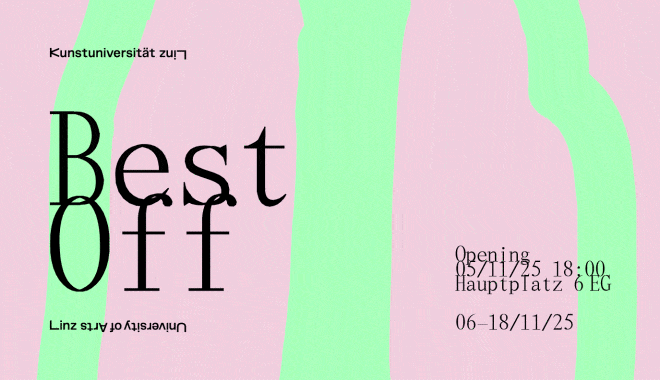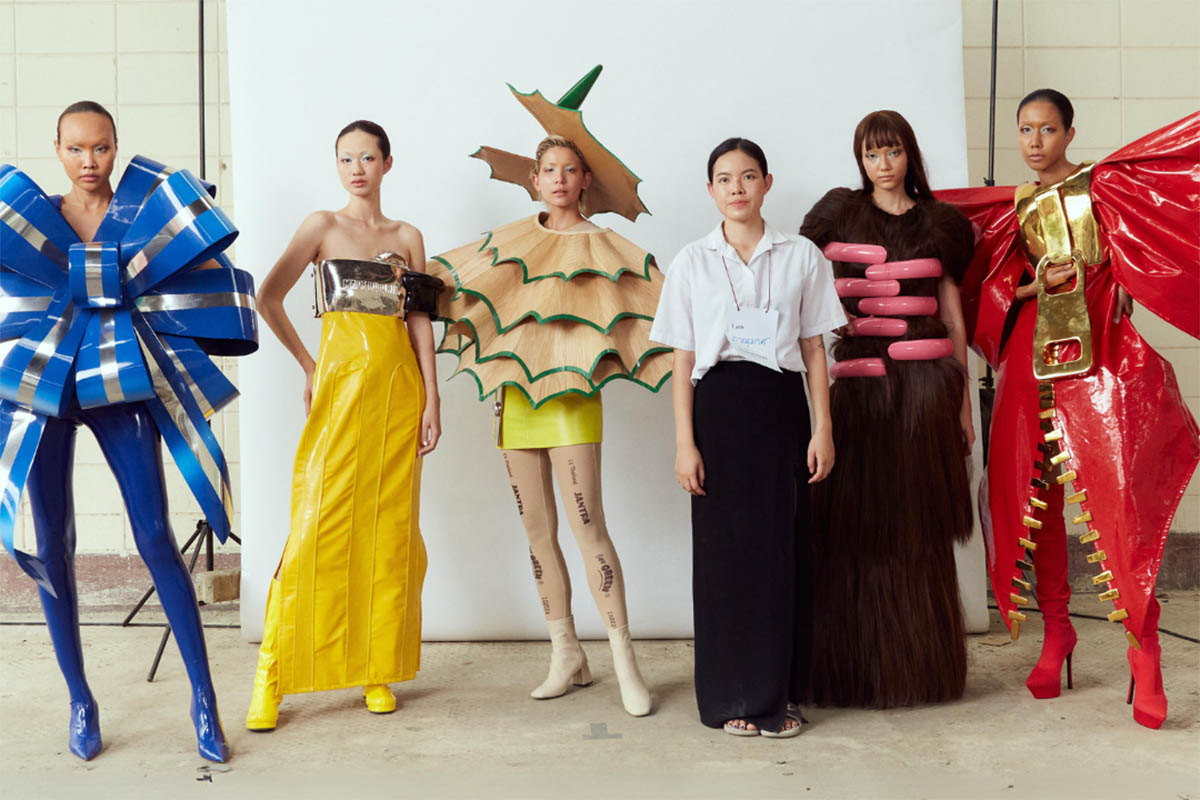
Tell us about your background and how you came to fashion design.
I was born and raised in Chiang Mai, a province in northern Thailand. My grandmother was a bag tailor, so I have been familiar with sewing machines since I was young. With a childhood dream, I moved to Bangkok to study fashion at the bachelor’s level. I have continuously worked on my projects and just graduated this past April.
Please elaborate on the Hair Clip dress that went viral on the internet, as well as other looks from your graduating collection.
The initial inspiration for this collection dates back to my visit to the Louvre Museum, where I saw the real Mona Lisa. It made me think about how this piece has been copied and reproduced as a commercial product countless times. These products are often referred to as kitsch art, which means artworks that are cheap, devalued, or imitations. I thought taking kitsch art items and turning them into valuable fashion pieces would be fun.
The inspiration for this collection comes from the word „kitsch,“ which refers to items that lack good taste, are cheap, and are commonly seen. However, it also reflects the mainstream popularity of the aesthetics of the masses. This concept satirizes taste and value in art. I creatively turned them into clothing, I took everyday items that people are familiar with, such as hair clips, pencil shavings, bows, and lighters.
Another source of inspiration is the artist Jeff Koons. I admire his creative thinking, how he connects with people and his approach to art. All these elements have come together to create this collection.
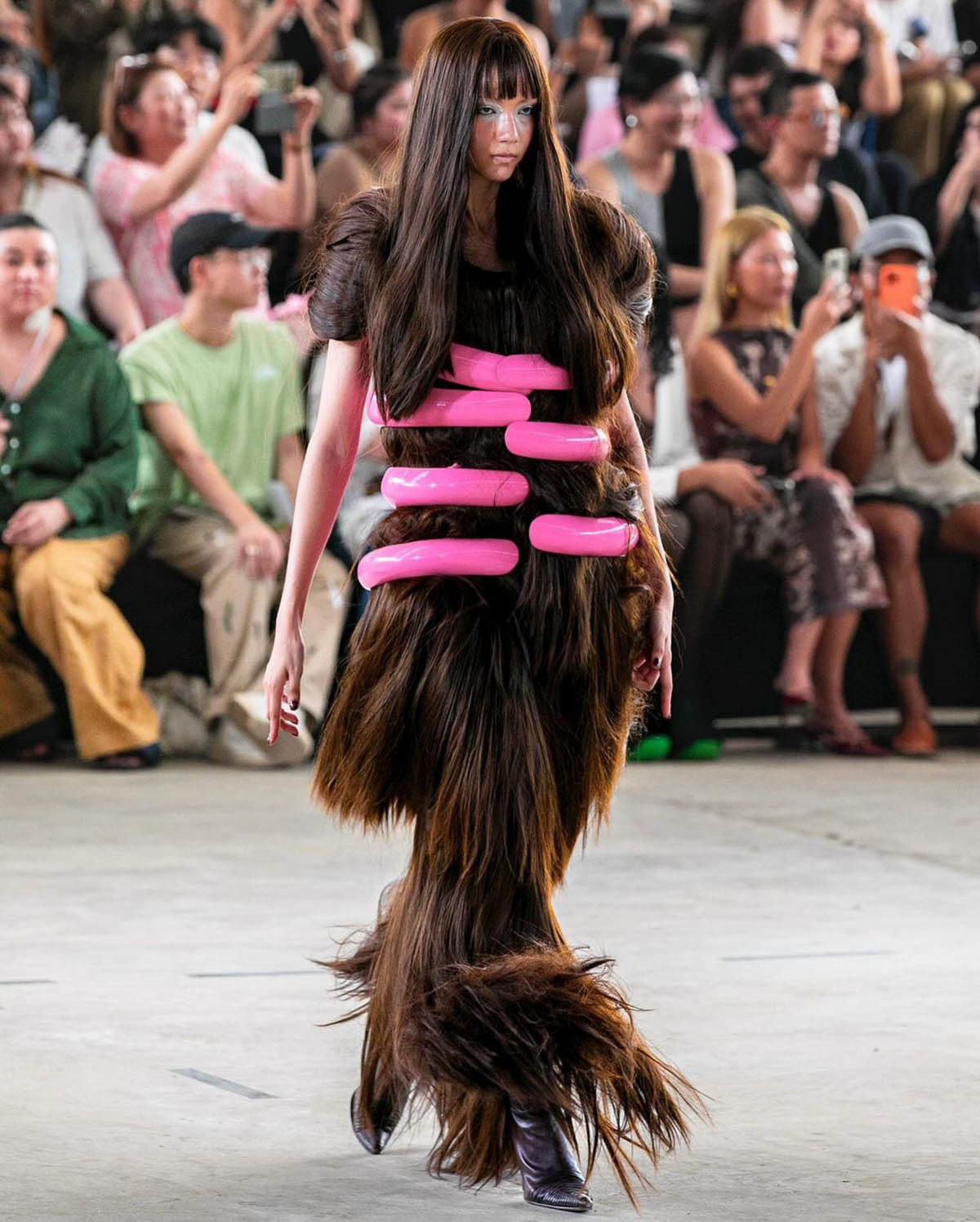
Please take a seat. The chair dress is a magical piece. How did you make it?
The chair outfit is part of a pre-thesis collection inspired by the main concept of kitsch art. The intention was to design it as a piece of conceptual art. I chose the silhouette of a plastic chair, an item that epitomizes kitsch, is commonly found on the streets, and effectively communicates the concept. The chair outfit is made from fiberglass, which is very strong and can be freely shaped into various forms. This material was chosen for its smooth and glossy surface and the blue latex outfit worn underneath.
Creating this outfit required a range of creative skills and multidisciplinary knowledge. I had to collaborate with various skilled craftsmen, including latex makers, fiberglass fabricators, polishers, painters, and equipment installers.
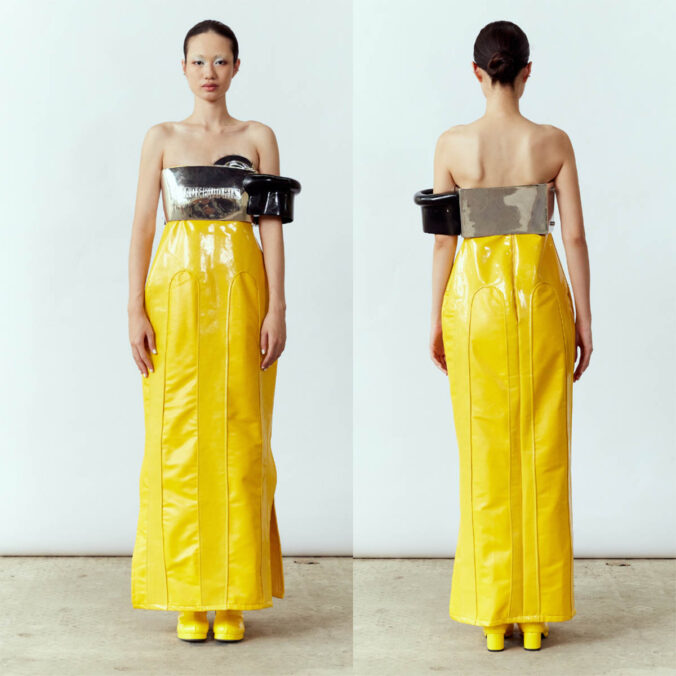

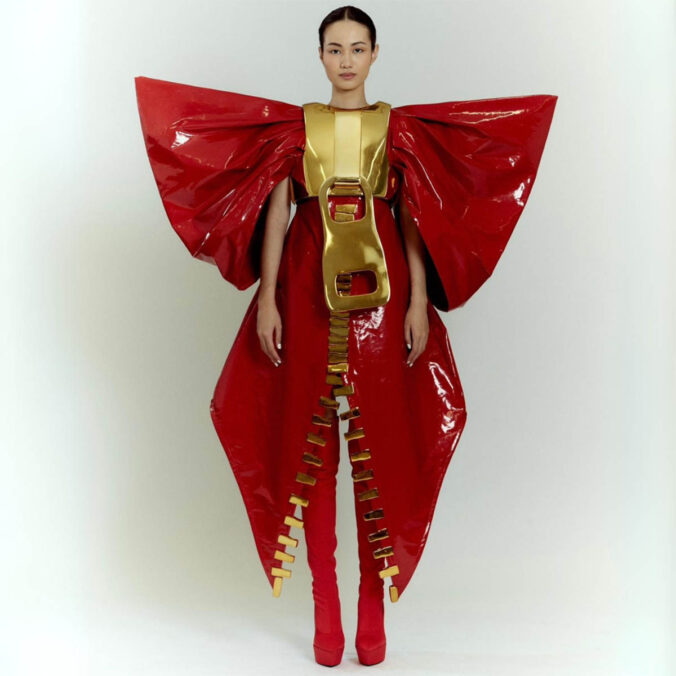
Please explain the production process of your pieces in general, the materials, and how everything looks from the sketch to the final piece.
After researching the inspiration and creating sketches, my vision for this collection was shiny and large. I searched for the necessary materials and studied how to construct them with plastic. The challenge for this collection was using fiberglass, which involved molding and casting each piece individually instead of using 3D printing.
Fortunately, my father is skilled in craftsmanship and was able to help me significantly. Creating this collection involved a lot of experimentation with different materials, requiring numerous adjustments before achieving the final design.
I read one comment on your Instagram page: ‚Have I just found the future creative director of Moschino?‘ Could you imagine something like that in the future? What are your dreams?
It would be amazing if I had the opportunity to collaborate with major brands, and Moschino is a brand I really admire. My dream is to continue creating work as an artist.
How would you describe CAMP today?
Camp is accessible fun that doesn’t need deeply complex content. It focuses on grandeur and extravagance in outfits to captivate and impress people at first sight.
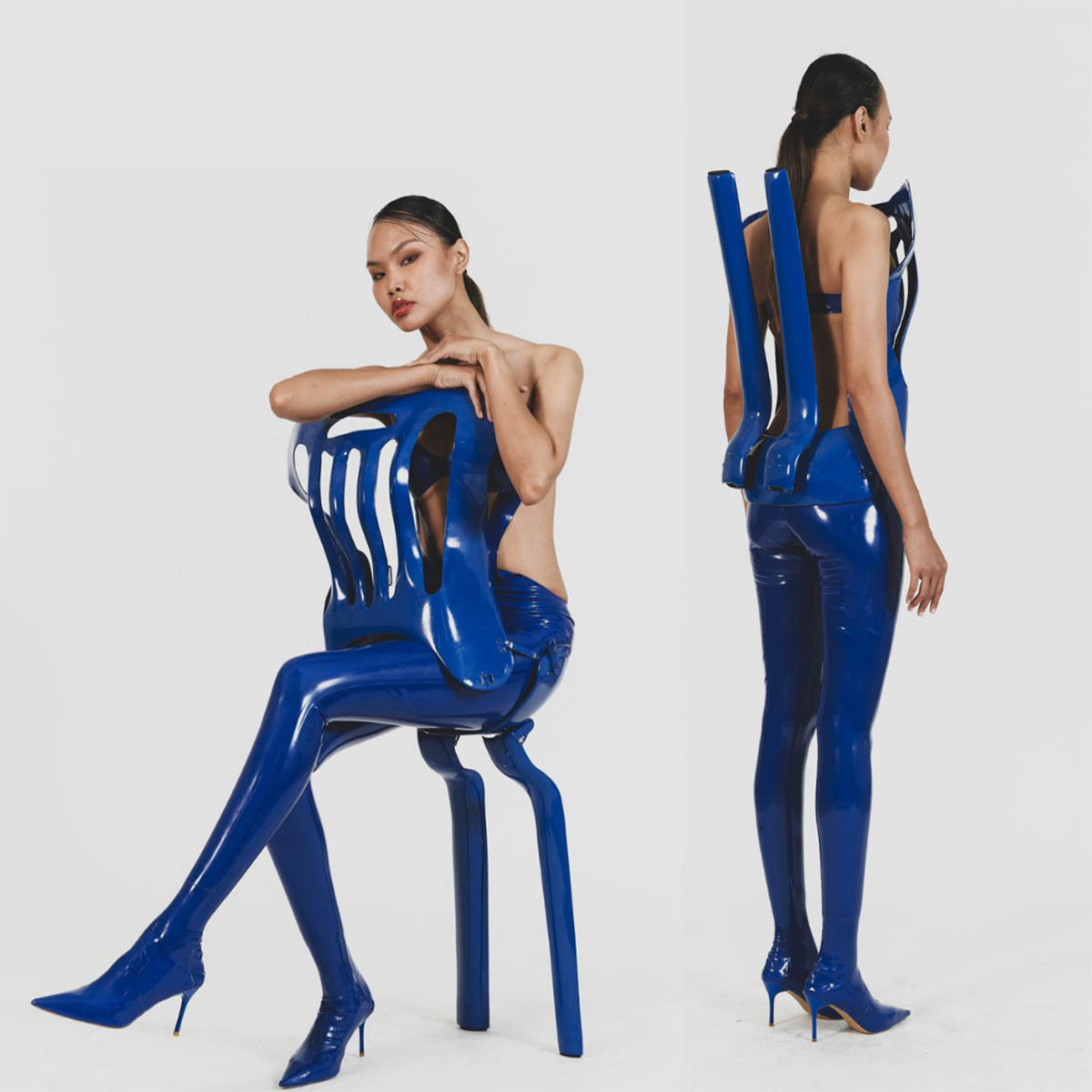
What are you wearing every day? What is your favorite accessory?
I love wearing boots, especially ones that are colorful and unique. Along with hats, these are two items I’m always willing to buy and collect.
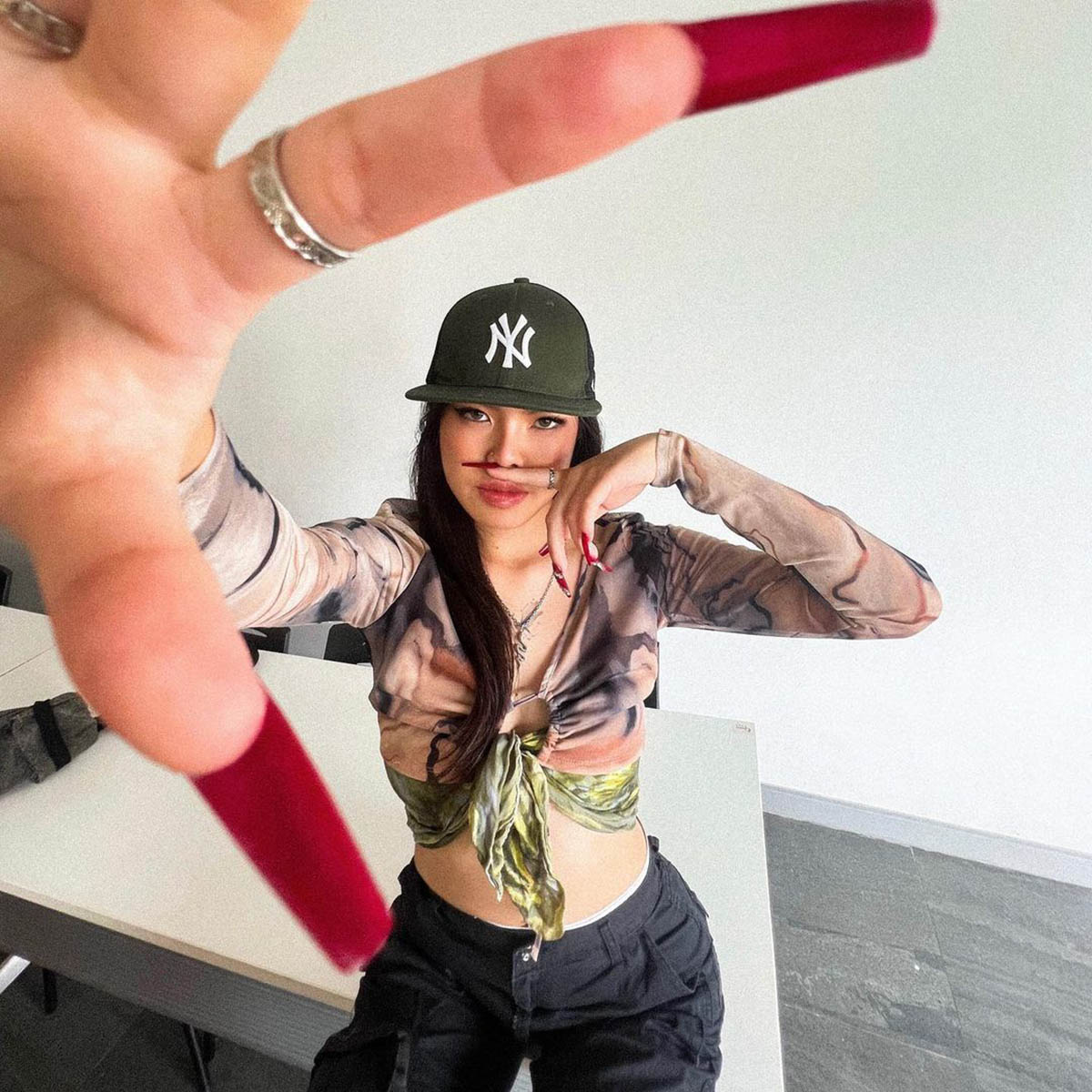
Where can I find good design and exciting fashion stores in Thailand?
As for me, I mostly like to buy second-hand clothes. This means the items I choose are unique pieces. You can find them at various second-hand clothing sources, like Shinjuku Outlet. Siam Center also has flagship stores for many Thai designers.
What will a person wear in fifty years on the street, and why?
Fashion is about the cyclical nature of trends. I believe that in the next 50 years, people will bring back old trends but present them in new ways.
Prim Shalyn – www.instagram.com/primshalyn



